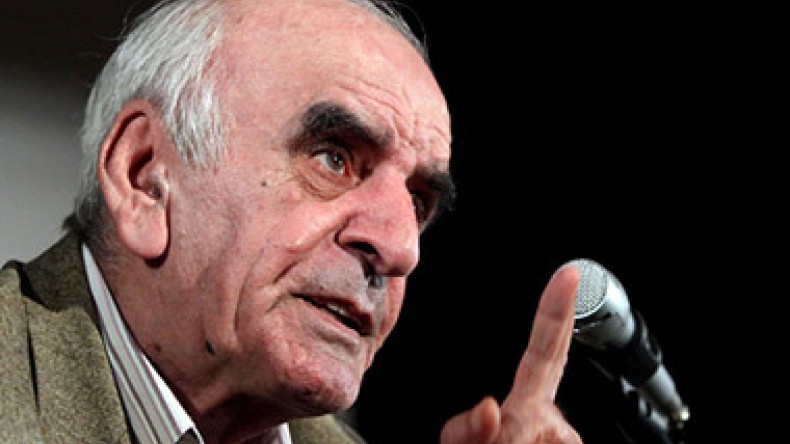
Renowned director Artavazd Peleshyan marks 76th birthday
Today, February 22, marks the 76th birthday of prominent Armenian director of film-essays, documentarian in the history of film art and film theorist Artavazd Peleshyan. Peleshyan was born in Leninakan, currently Gyumri.
In the words of the filmmaker Sergei Parajanov, Peleshyan is "one of the few authentic geniuses in the world of cinema."
He is renowned for developing a style of cinematographic perspective known as distance montage, combining perception of depth with oncoming entities, such as running packs of antelope or hordes of humans. He has always made extensive use of archive footage, mixed in with his own shots, with fast inter-cutting between the two. Telephoto lenses are often used to get "candid camera" shots of people engaging in mundane tasks.
His films are on the border between documentary and feature, somewhat reminiscent of the work of such avant-garde filmmakers as Bruce Connor, rather than of conventional documentaries. Most of his films are short, ranging from a mere 6 minutes long up to about 60 minutes long. They feature no dialogue. However, music and sound effects play nearly as important a role in his films as the visual images in contributing towards the artistic whole. Nearly all of his films were shot in black and white.
His early films, made when he was still a student at VGIK, were awarded several prizes. To date, 12 films by Peleshyan are known to exist. The Beginning (Skizbe) (1967) is a cinematographical essay about the October Revolution of 1917. One of the unique visual effects used in this film is achieved by holding snippets of film still on a single frame, then advancing only for a second or two before again pausing on another, resulting in a stuttering visual effect. Other important films by him are We (Menq) (1967, a poetically told history of Armenia and its people, and Inhabitant (Obitateli) (1970), a reflection on the relationship between wildlife and humans. Artavazd Peleshyan's most brilliant film is considered, by many critics, to be The Seasons of the Year (1975). Exquisitely shot by cinematographer Mikhail Vartanov, it is an outstanding look at the contradiction and harmony between humans and nature. It was the last collaboration between Peleshyan and Vartanov, Armenia's two most important documentary auteurs; they first worked together on The Autumn Pastoral (1971).
Peleshyan is also the author of a range of theoretical works, such as his 1988 book, Moyo kino (My Cinema).
He is now living in Moscow. His most recent film was edited at the ZKM | Karlsruhe Film Institute in 2005-2006 and has not yet been released.
Newsfeed
Videos






























